
Prokudin-Gorskii Selfportrait 1907-1915
The People of Imperial Russia
Color Photographs of
Sergei Mikhailovich Prokudin-Gorskii
Photographer to Nicholas II
1905 - 1915

Prokudin-Gorskii Selfportrait 1907-1915
The photographs of Sergei Mikhailovich Prokudin-Gorskii (1863-1944) offer a vivid portrait of a lost world--the Russian Empire on the eve of World War I and the coming revolution. His subjects ranged from the medieval churches and monasteries of old Russia, to the railroads and factories of an emerging industrial power, to the daily life and work of Russia's diverse population.
In
the early 1900s Prokudin-Gorskii formulated an ambitious plan for a
photographic survey of the Russian Empire that won the support of
Tsar Nicholas II. Between 1909-1912, and again in 1915, he completed
surveys of eleven regions, traveling in a specially equipped railroad
car provided by the Ministry of Transportation.
Prokudin-Gorskii
left Russia in 1918, going first to Norway and England before
settling in France. By then, the tsar and his family had been
murdered and the empire that Prokudin-Gorskii so carefully documented
had been destroyed. His unique images of Russia on the eve of
revolution--recorded on glass plates--were purchased by the Library
of Congress in 1948 from his heirs. For this exhibition, the glass
plates have been scanned and, through an innovative process known as
digichromatography, brilliant color images have been produced. This
exhibition features a sampling of Prokudin-Gorskii's historic images
produced through the new process; the digital technology that makes
these superior color prints possible; and celebrates the fact that
for the first time many of these wonderful images are available to
the public.
Born in Murom, Vladimir Province, Russia
(originally believed to be St. Petersburg) in 1863 and educated as a
chemist, Prokudin-Gorskii devoted his career to the advancement of
photography. He studied with renowned scientists in St. Petersburg,
Berlin, and Paris. His own original research yielded patents for
producing color film slides and for projecting color motion pictures.
Around 1907 Prokudin-Gorskii envisioned and formulated a plan to use
the emerging technological advancements that had been made in color
photography to systematically document the Russian Empire. Through
such an ambitious project, his ultimate goal was to educate the
schoolchildren of Russia with his "optical color projections"
of the vast and diverse history, culture, and modernization of the
empire. Outfitted with a specially equipped railroad car darkroom
provided by Tsar Nicholas II, and in possession of two permits that
granted him access to restricted areas and cooperation from the
empire's bureaucracy, Prokudin-Gorskii documented the Russian Empire
around 1907 through 1915. He conducted many illustrated lectures of
his work. Prokudin-Gorskii left Russia in 1918, after the Russian
Revolution, and eventually settled in Paris, where he died in
1944.
Text and photos from the US
Library of Congress, Washington, DC, where you also find a
detailed description of the three-glass-plate technique – and
of course 2000 more photographs.
Bukhara

The Emir of Bukhara 1907-1915
possibly
Prokudin-Gorskii's most famous photograph
And one of his bureaucrats
Samarkand
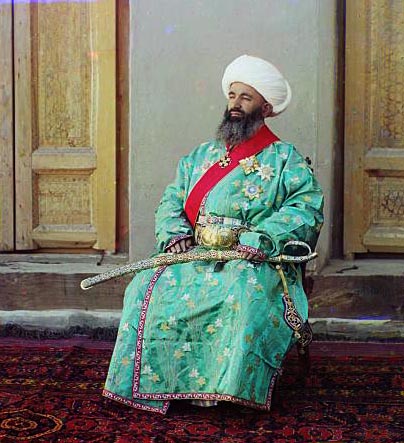
Minister of the Interior of the Emirate of Samarkand 1911

Russian policeman
The
People of Samarkand

Fabric merchant in his shop. 1911 
Melon vendor 1911 
Water vendor 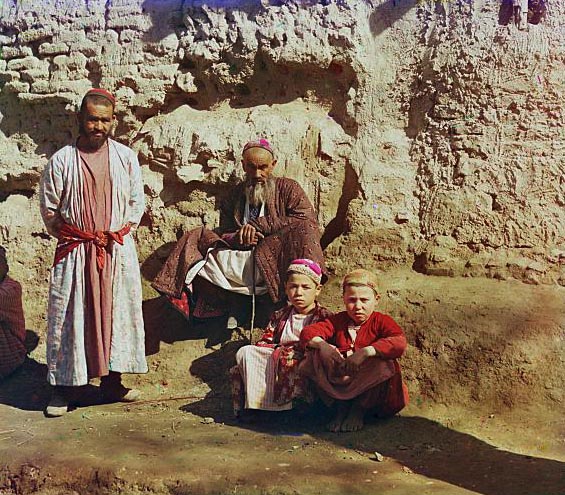
Men of the Sartian Minority 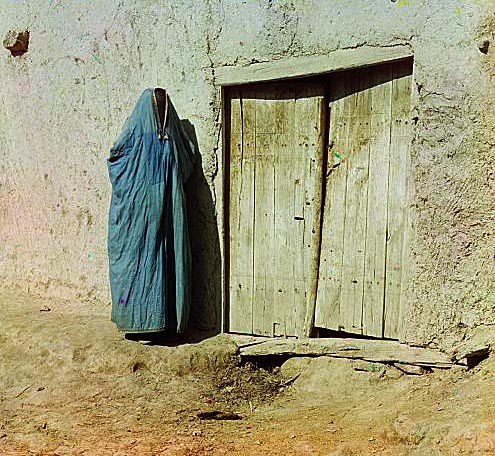
A Sartian woman 
A boy dancer and his orchestra 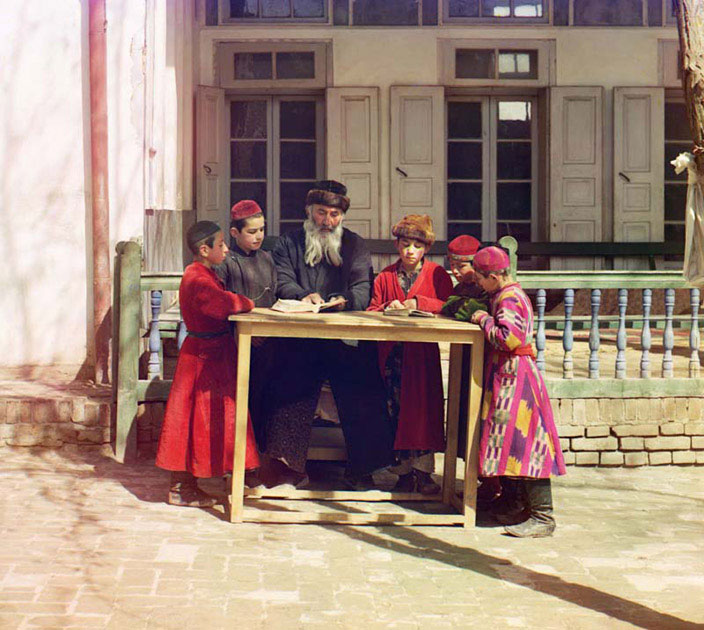
A Jewish Schul 1911 
A Tajik in Winter 1911 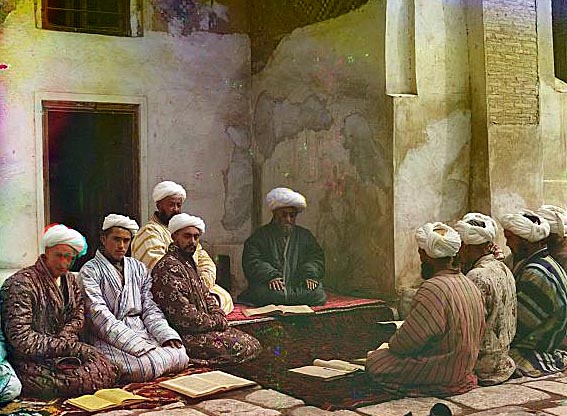
Students in a Medresa
Khiva

Isfandiyar
Khan, Khiva 1907-1915
Nomadic
people of the Golodnaia Steppe
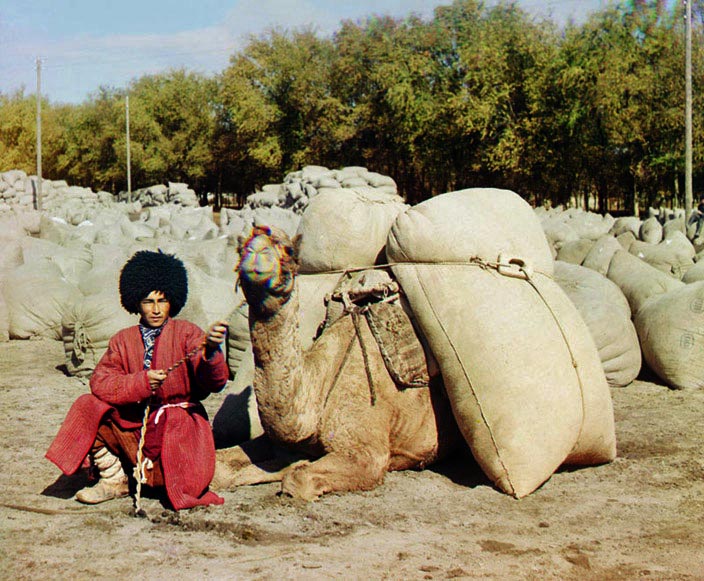
Turkmen Camel Driver 1907-1915
Wearing
traditional dress and headgear, a Turkmen camel driver poses with his
camel, laden with what is most likely grain or cotton. Camel caravans
remained the most common means of transporting food, raw materials,
and manufactured goods in Central Asia well into the railroad era.
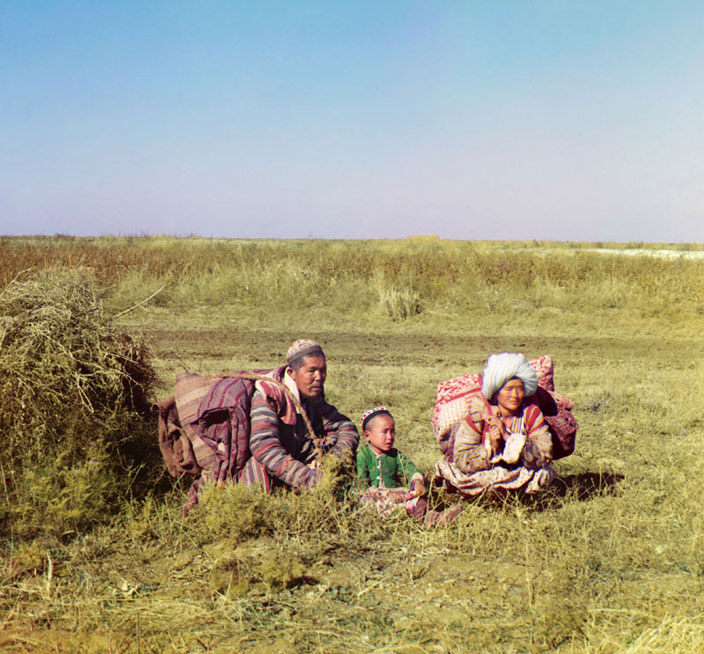
Nomadic people
in the Golodnaia Steppe - The HungerSteppe
Many Central Asiatian people, for example the Kirghiz, Kazakhs, and Uzbeks, lived nomadic lives on the steppes, valleys, and deserts, migrating seasonally from one place to another as opportunities for obtaining food, water, and shelter changed. Shown here is a young Kazakh family in colorful traditional dress moving across the Golodnaia (or "Hungry") steppe in present-day Uzbekistan and Kazakhstan.
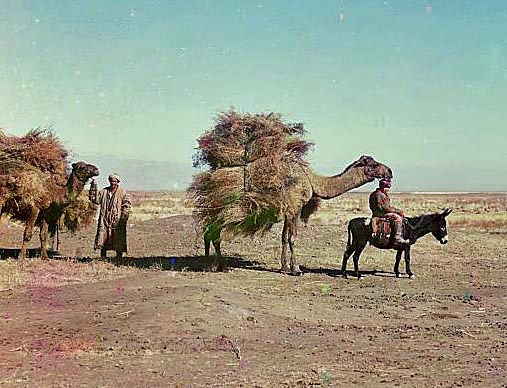
Kamels carrying firewood or camel feed
Turkmen
in Uzbekistan
Turkmen family in front of their yurt 1907-1915
In this portrait, Prokudin-Gorksii captures the traditional dress, jewelry, and hairstyle of an Uzbek woman standing on a richly decorated carpet at the entrance to a yurt, a portable tent used for housing by the nomadic peoples of Central Asia. After conquering Turkestan in the mid 1800s, the Russian government exerted strong pressure on the nomadic peoples to adopt a sedentary lifestyle and settle permanently in villages, towns, and cities.
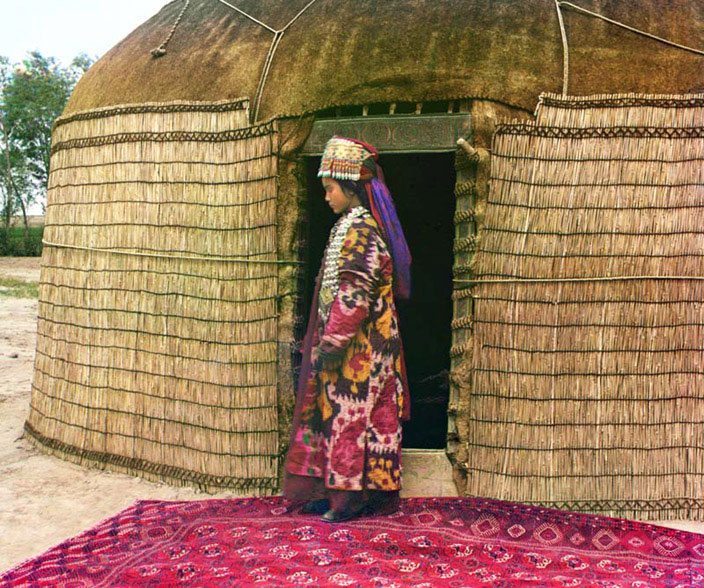
Woman in the door to her yurt
The
People of Dagestan

Dagestani man wearing a Russian medal 1907-1911 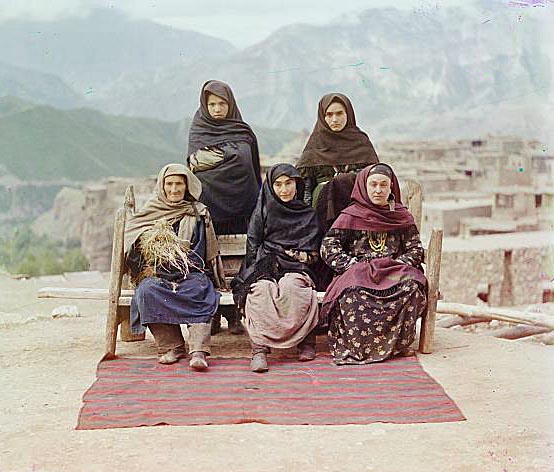
Dagestani women 
Dagestani couple 1907-1911
Armenian
Women in Artvin (now Turkey)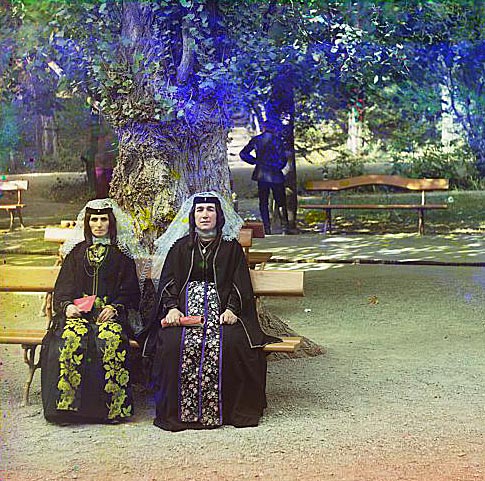
Armenian women in holiday attire. [Artvin] 1905 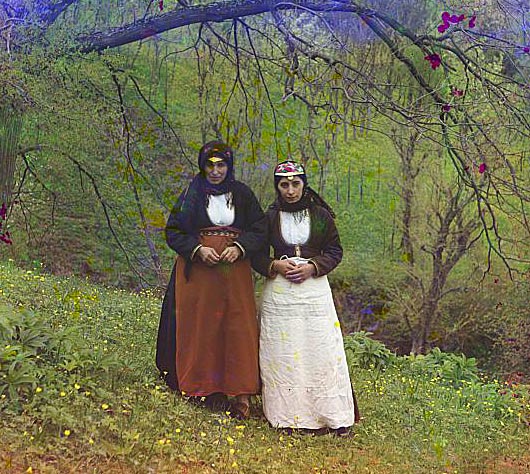
Armenian women (Catholics) in customary dress. [Artvin] 1905

Young Armenian woman [Artvin] 1905
The
Russians
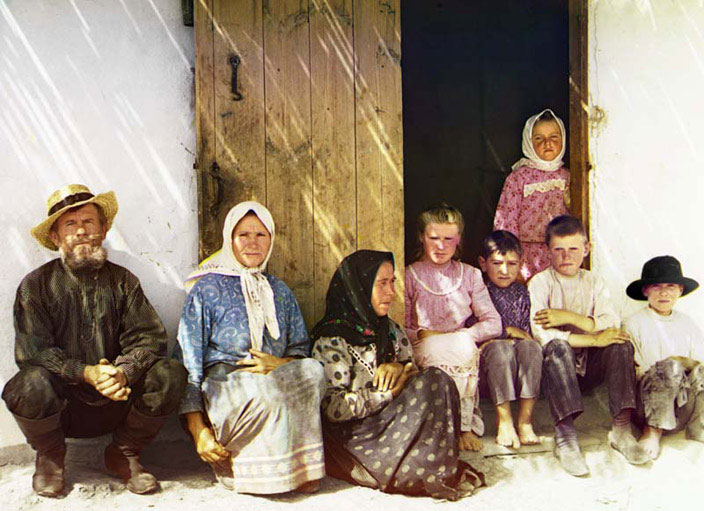
Russian Settlers in the North Caucasus 1905-1915
Ethnic Russian settlers to the Mugan Steppe region, south of the Caucasus Mountains and west of the Caspian Sea, established a small settlement named Grafovka. The region is immediately north of the border with Persia. Settlement of Russians in non-European parts of the empire, and particularly in border regions, was encouraged by official government policy and accounts for much of the Russian migration to Siberia, the Far East, and the Caucasus regions.
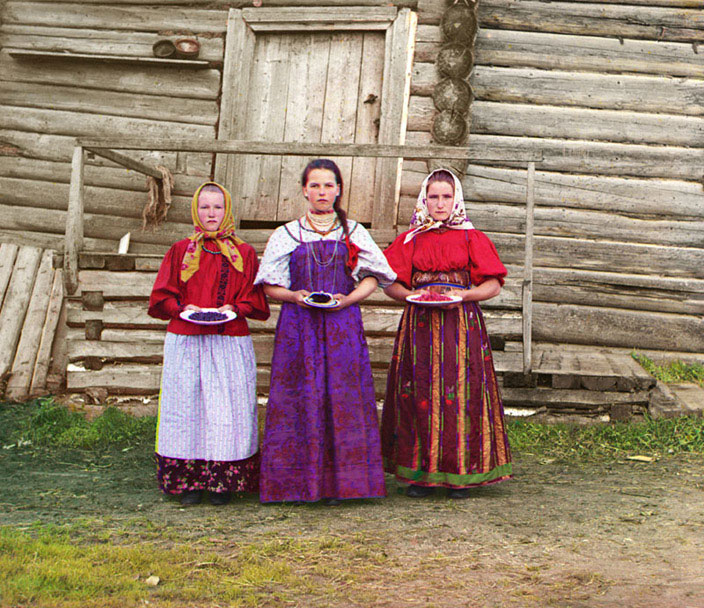
Russian peasant girls, Kirillov 1909 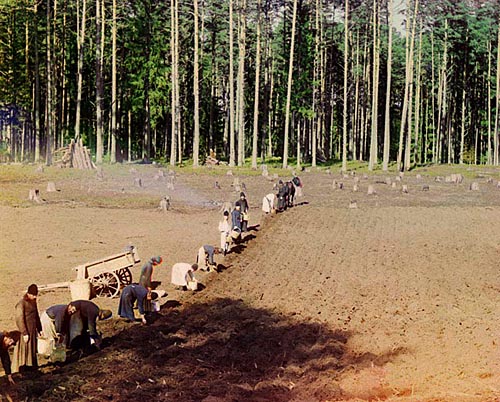
Monks near Lake Seliger planting potatoes, 1910 
Karelians on a cart 
On the Railroad near Petrozavodsk, Lake Onega 1910 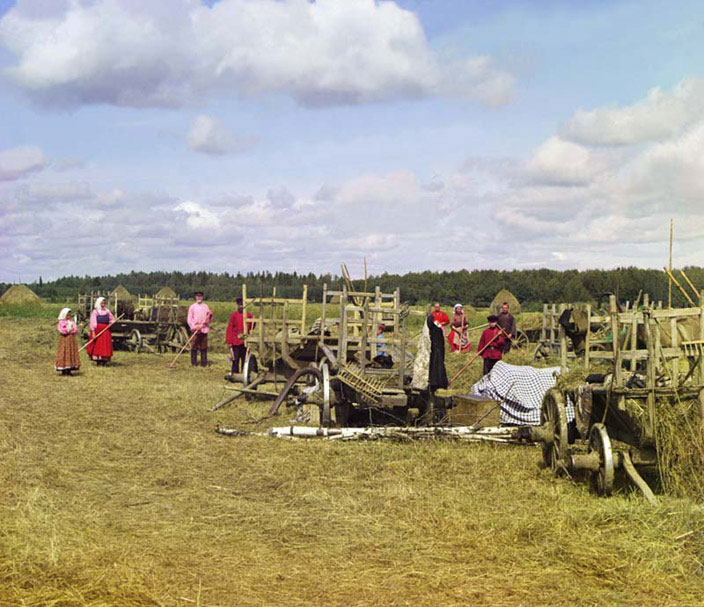
Hay harvest near Cherepovets 1909
People
of the Urals

Bakalskii Mine 1910
The Ural Mountain region is noted for the richness of its iron deposits and ores. The Bakaly hills, in the area outside the city of Ekaterinburg, provide the locale for a small-scale family mining operation.
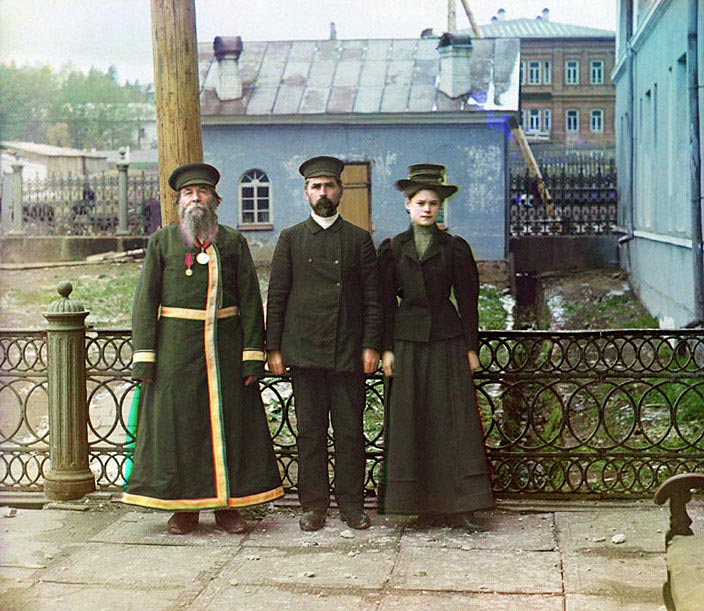
The Foreman of a factory in Zlatoust and his family. 1910
A. P. Kalganov poses with his son and granddaughter for a portrait in the industrial town of Zlatoust in the Ural Mountain region of Russia. The son and granddaughter are employed at the Zlatoust Arms Plant--a major supplier of armaments to the Russian military since the early 1800s. Kalganov displays traditional Russian dress and beard styles, while the two younger generations have more Westernized, modern dress and hair styles
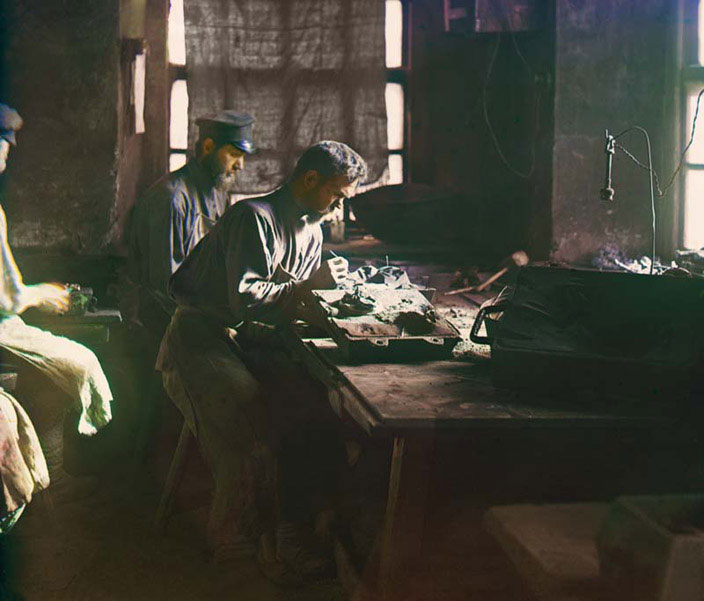
Founded in 1747, the Kasli Iron Works, were located in the heart of the Ural Mountains between the cities of Ekaterinburg and Cheliabinsk--a region rich in iron ore. The plant was known for the high quality of its cast iron products and for its highly-skilled work force, which numbered over three thousand persons at the time this photograph was taken. 1910

Pinkhus Karlinskii (84), the supervisor of the Chernigov floodgate, stands by a ferry dock along the Mariinskii Canal system. 1909
Rolf
Gross
Pacific Palisades, CA
September 2010